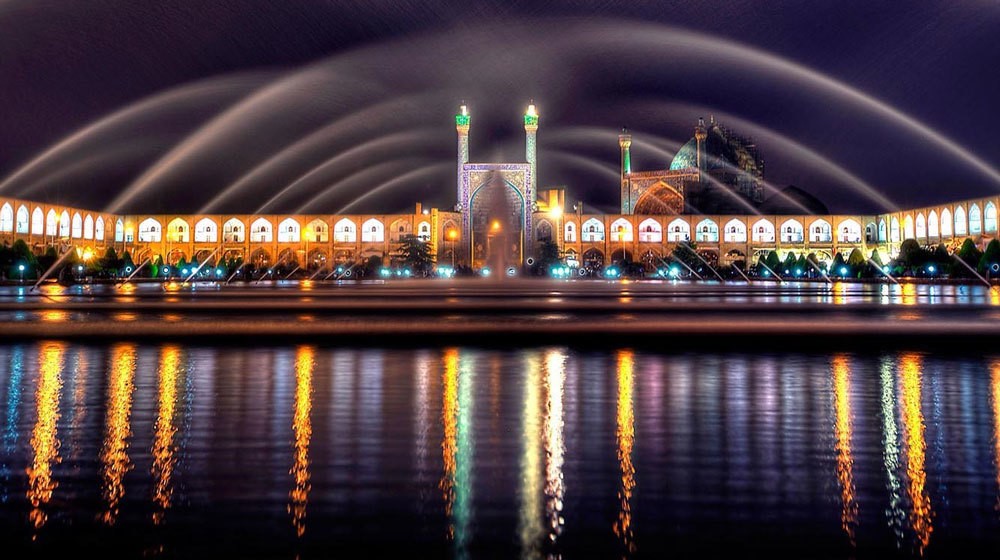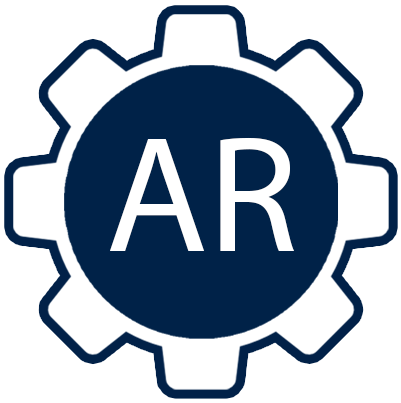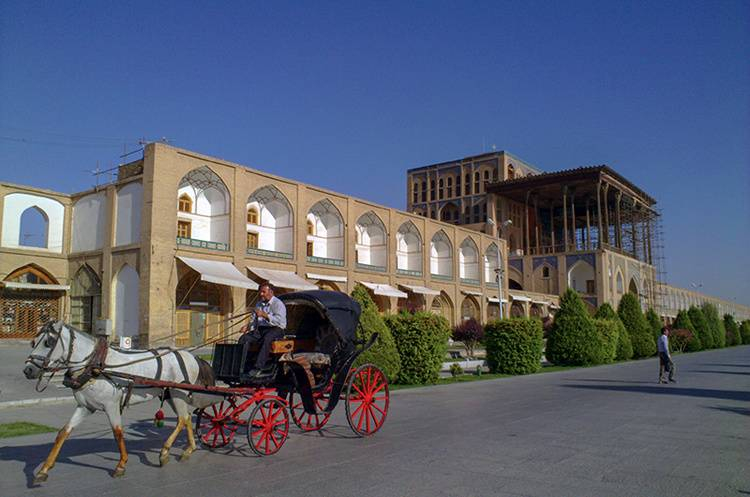With blue running through its mosques and Islamic architecture, Isfahan has earned the epithet of the City of Turquoise Domes, and home to one of the largest city squares in the world, Naqsh-e Jahan. Isfahan's life has always intertwined with the Zayanderud, a river flowing through the city. Once bigger than London and more cosmopolitan than Paris, Isfahan used to host many palaces.
Located at the foothills of the Zagros mountain range and with an altitude of about 1600 meters above sea level, Isfahan enjoys a continental climate. Each and every season is sensible in Isfahan, with hot and occasionally scorching summer days and cold winter days and even colder nights. During spring, Isfahan recovers its verdure and greenery, turning to an Eden on the Earth with mild and light breezes brushing against the skin. The colorful fall turns another beautiful page of Isfahan.
Isfahan is the third-largest city in Iran, after Tehran and Mashhad, with a population of about 2 million people, the majority of whom are Persian speakers. There are some minor ethnicities living in Isfahan, the most important of which are Armenians who live in Julfa. They have been living among their Muslim fellow-citizens for centuries in peace running their own churches and cathedral, which are also amongst the tourist attractions of the city. In addition, a Jewish quarter once was extant in Isfahan; therefore, some Jewish citizens still live in the city.

The city enjoys quite ample transportation modes, including bus, subway, and taxi. Buses move passengers to every corner of the city. They carry around 550 thousand passengers a day. Metro, or subway train, has just started operating in Isfahan with only one line running from north to south of the city and carrying around 80 thousand passengers a day. Metro lines are expanding in Isfahan connecting more parts to each other. Taxi is another choice available especially with Uber-like or online taxis growing day by day. Additionally, riding a bicycle is always a choice in Isfahan as the city is improving progressively towards a bicycle-friendly metropolis.
Perched at the crossroads of history and civilizations, Isfahan has witnessed many incidents and eras developing her own history. Throughout history, this city was burned to ashes on numerous occasions, yet has risen from the ashes, nonetheless. It is located in the corridors of north-south and east-west.
Lately, Isfahan has flourished as a major industrial hub of the nation. In the vicinity of the giants of steel factories and many industrial towns and being surrounded by different mines, this city has coped well with oil-refining and petrochemical industries as well. Processed foods, consumer goods, leather, and machine production industries have also been developed rapidly in and around Isfahan. Nuclear facilities and textile manufacturing factories are other industrial poles of Isfahan, showing that this city has a lot to offer in terms of industrialization.
Exploring the City
When studying takes a toll on students, they can readily pick a destination to spend their leisure time. City Center shopping mall, located in the south of Isfahan, is a great choice to enjoy free time. It contains luxurious shopping and retail stores, coffee shops, restaurants, and a movie theater complex that are open until midnight. There is a dated expression amongst people of Isfahan that says, “half the beauty of the world lies in Isfahan.”
There are quite a number of parks and gardens elegant for a stroll. The prettiest is the Garden of Flowers in the center of the city with its mesmerizing flowers. The green lush park and landscape alongside the banks of Zayanderud are another alternative excellent for lightening the mood. The river is the heart of Isfahan and breathes life to the city. Alongside the river, many historic bridges have always attracted attention to themselves, from Si-o-Se Pol Bridge and Khaju Bridge to Shahrestan Bridge, the oldest of all. Under the Khaju Bridge, people occasionally play musical instruments and sing traditional songs together, which makes it a unique atmosphere in the world!
Naqsh-e Jahan Square, at the center of Isfahan, is a 400-year-old masonry construction with an area of 89600 square meters. This beautiful square is surrounded by Jame Abbasi Mosque, Lotfollah Mosque and Ali-Qapu Palace, each of which takes hours to take in their beauties and pages of words to describe. Jame Abbasi Mosque, Lotfollah Mosque, and Ali-Qapu Palace are situated respectively on the southern, eastern, and western sides of the square. On the northern side, the Isfahan Grand Bazaar is located, where locals sell artworks and artifacts in vintage stores. Horse-drawn carriages available to visitors, a big pool stretching at the center of the square with greenery surrounding it, and a lot of cafés and restaurants offer great opportunities for spending copious quality hours in this colossal structure and acquiring a glimpse of middle-eastern culture and architecture by visiting its mosques and palace.
Chahar Bagh is a historical avenue that connects the northern parts of the city to the southern ones and is about 6 kilometers long. Hasht Behesht and Chehel Sotoun palaces are on the eastern side of this avenue. Chahar Bagh-e Abbasi, the middle section of this avenue, connects Imam Hussein Sq. to Si-o-Se Pol Bridge. Whether riding a bicycle or walking through the length of this avenue, the glory of trees and gardens alike and its magnificent relaxing ambiance are conspicuous. Different shopping centers and stores can turn wandering in the avenue into an experience of shopping. Various cafés, on the block-paved walkways, can cheer up the day. The no-car-allowed policy in Chahar Bagh-e Abbasi makes strolling even more pleasant and vibrant. Amadegah, the center of bookstores, is also in the vicinity of this avenue. After a long refreshing walk from Imam Hussein Sq. to Enghelab Sq., Si-o-Se Pol Bridge comes into sight which makes the walk even longer, yet more memorable by crossing over the Zayanderud.
Hasht Behesht pavilion, surrounded by Hasht Behesht garden, is an enjoyable place to visit, and many families picnic in this garden to spend their time with each other away from the amenities and technologies available in their homes. Chehel Sotoun is another palace of this historical city located almost near Hasht Behesht, in the middle of a garden. Twenty wooden columns support the entrance of this palace, and when reflected in the pool in front of the entrance, they appear to be 40, hence the name of the palace, “40 columns”. The interior frescos of this pavilion depict historical events such as the Battle of Chaldiran. Chehel Sotoun is one of the most remarkable ancient buildings in Isfahan.
New Julfa, named after the older city of Julfa, is the Armenian quarter of Isfahan, and one of the largest Armenian quarters in the world. Holy Savior Cathedral, commonly referred to as Vank Cathedral, is located in New Julfa, a cathedral that took Armenians more than 50 years to finish its construction in the 17th century. The interior frescos of this cathedral are a combination of Persian miniature and Biblical story of the creation of the world. The Museum of Khachatur Kesaratsi in front of the cathedral is another notable place to see when visiting New Julfa. Nazar and Khaghani Streets, next to Julfa, are alternatives to be entertained as there are various shopping centers, restaurants and fast food stores scattered throughout the district.
Mount Soffeh in the south of Isfahan is the place to spend the weekend mornings as it attracts many people fond of hiking and outdoor workouts to fill their lungs with fresh air after a tiring week. Cable cars are available as well to assist people in reaching the top. The vista of Isfahan visible from the peak of this mountain is not to be sneezed at. The greenery landscape at the foot of the mountain, a bowling center, an amusement park, and a restaurant are other features of the place which provide ample opportunities to enjoy a weekend.



